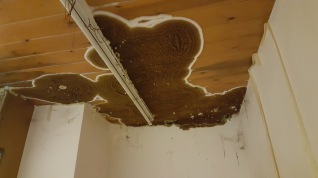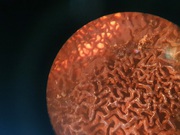
Dry Rot & Wet Rots Treatments in Derbyshire & West Nottinghamshire.
Fungal decay (Rots) occurs in timber which becomes wet for some time. This can then result in an attack by one of a number of wood-destroying fungi.
Symptoms of Wood Rots (Wet & Dry):
Loss in strength, softening or disintegration of wood.
A hollow sound from large timbers.
Wood discolouring (Lighter or darker than normal).
Fungal Mycelium, strands or fruit bodies.
Mushroom smell.
Presence of certain wood boring insects which only live in decayed wood. Read more about wood boring insects (Woodworm) here.
Rot (Fungal Decay) Identification
It is important to identify whether timber decay has been caused by dry rot or another wood-destroying fungus such as one of the wet rots.
Wet Rots
There are many different types of Wet Rot.
The most common type of rot is caused by Coniophora Puteana (Cellar Fungus).
Poria Vaillantii (Mine Fungus) is another important wet rot fungus along with a number of less common fungi which can also occur.
While each fungus has its own unique features, the general appearance of most wet rots is similar – as is the treatment.
Wet rot is usually confined to the area of dampness where the rot started, this is because the mycelium does not have the ability spread into walls.
Dry Rot
Dry Rot Serpula Lacrymans is the most serious form of fungal decay in a building.
Dry Rot develops extensively on the surface of infected timber and in still, humid conditions produces a mass of cotton wool-like growth.Water droplets are also often produced on the surface of the mycelium.
The mycelium of Dry Rot spreads over the timber surface by the continued growth and branching of the delicate hyphal threads. Specialised strands develop within the mycelium and these supply water and nutrients to the growing fruiting bodies. The strands assume their real significance when the fungus spreads from infected timber onto the surface of adjacent stone or brick walls. The tiny hyphal threads penetrate the mortar joints and plaster layers and large areas of damp wall can then become infected.
What's the difference between Wet Rot & Dry Rot?
Wet rot occurs more frequently and is often less serious then Dry Rot. Wet Rot is typically confined to the area where timber has become and remains wet. Dry Rot however, has the ability to spread into other timbers via adjacent masonry, this can result in much larger and destructive outbtreaks occuring.
It is vitally important that the two types of decay be distinguished since they require different treatment. This is where it pays to have a qualified surveyor undertake a survey.
Timber Survey for Dry & Wet Rots by a Qualified Surveyor
There are quite a few rots that can occur in a building and also some rare ones that don't appear very often. They are often misdiagnosed which can result in further damage by the rot or expensive treatments when they are not needed.
Our surveyor is qualified to assess all fungal decay and wood boring insect problems that occur in buildings. He is a Certificated Surveyor In Remedial Treatment (CSRT). This is an industry recognised qualification gained through examination with the Property Care Association.
Dry Rot Outbreak in a Sub Floor Void (Video)
The following video shows a substantial Dry Rot outbreak to a underside of a suspended timber floor in a property near Chesterfield. The cause of the outbreak was due to a water leak and poor ventilation.
Dry Rot - Photo Gallery
Below is a photo gallery of Dry Rot outbreaks found in Derbyshire and West Nottinghamshire.



















